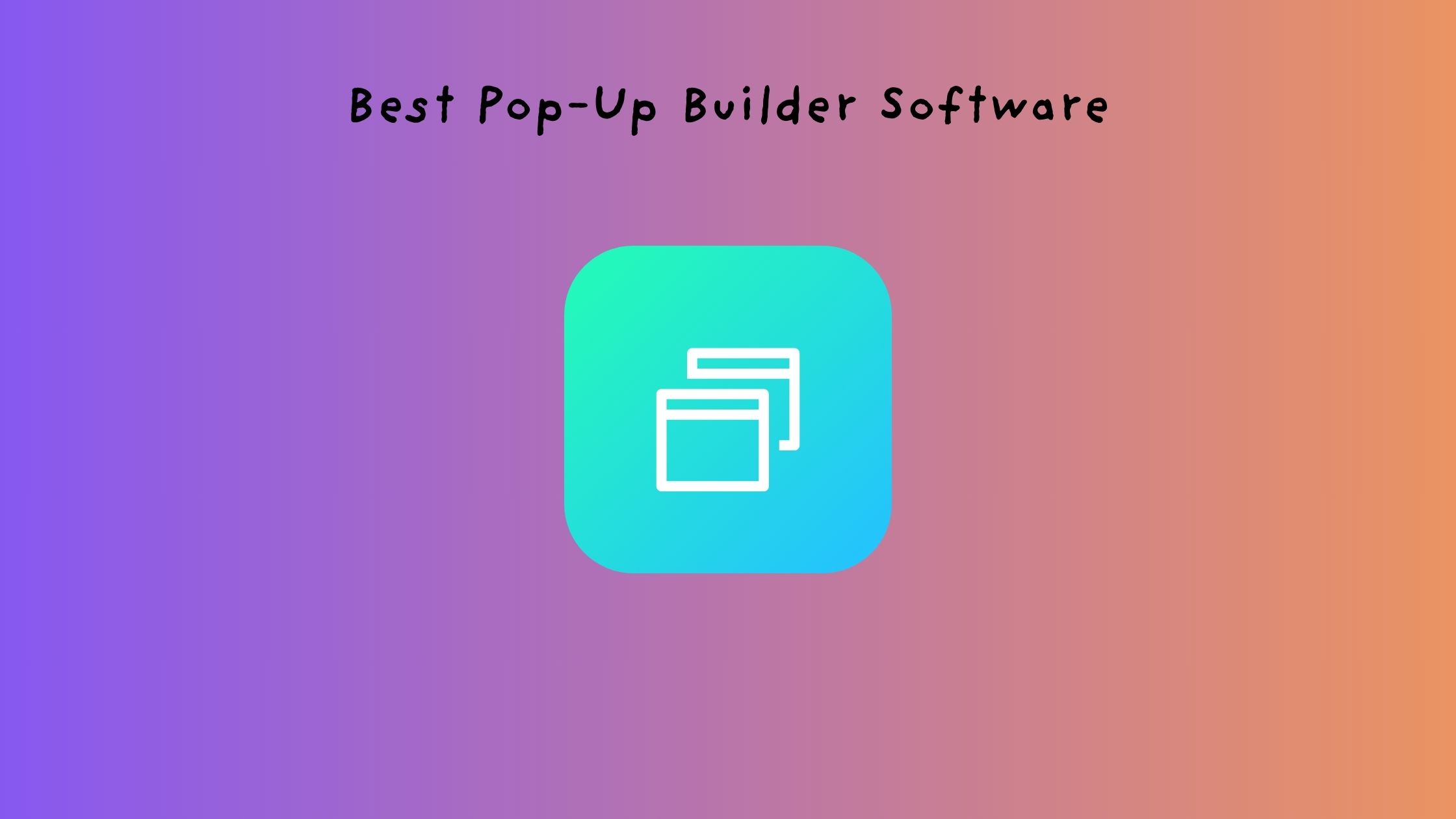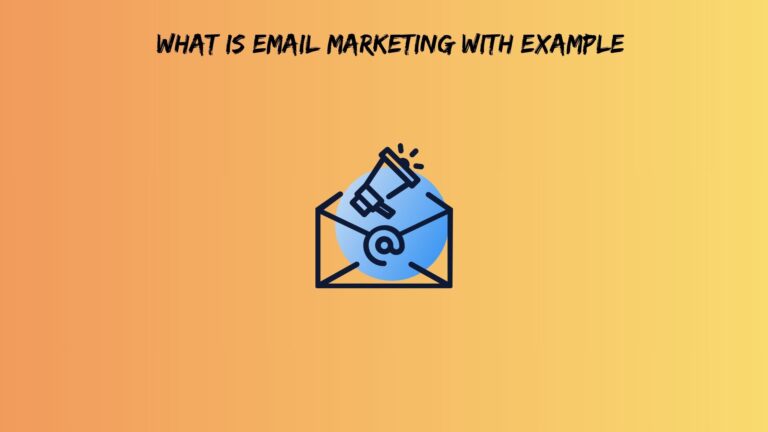Top 10 Best Pop-Up Builder Software Tools To Boost Conversions Without Annoying Visitors
Pop-ups get a bad rap. Meanwhile, smart marketers quietly use them to boost conversions by 300% without triggering visitor rage-quits. The secret? Choosing the right pop-up builder software that creates helpful interruptions instead of annoying spam.
This guide reveals the top pop-up builder software that actually respects your visitors while filling your conversion funnel.
The Psychology Behind High-Converting (Non-Annoying) Pop-Ups
Timing beats everything else in pop-up success. Research shows 15-second delays generate 40% higher conversion rates than instant pop-ups. Why? Visitors need time to understand your value before committing.
Intent-based triggers work like mind readers. Instead of ambushing every visitor, smart pop-up builder tools track behavior signals. Scroll depth, mouse movement, and time-on-page reveal genuine interest levels.
Mobile users expect different experiences from desktop browsers. Touch interfaces need larger buttons, faster loading, and thumb-friendly placement. The best pop-up builder software adapts automatically to device types.
Personalization psychology explains why generic messages fail miserably. “Subscribe to our newsletter” converts at 2%. “Get your free marketing checklist” hits 15%. Specificity wins every time.
Exit-intent technology has evolved beyond simple mouse tracking. Modern software for building pop-ups uses machine learning to predict abandonment before it happens. Consequently, recovery rates improve dramatically.
Essential Features That Separate Winners from Time-Wasters
Smart Triggering Systems
Behavioral triggers replace the spray-and-pray approach with surgical precision. Advanced pop-up builder solutions track visitor engagement patterns, then display offers at optimal moments.
Geographic targeting lets you customize messages by location. Urban visitors might see different offers than rural users. Furthermore, time zone awareness prevents midnight pop-ups from annoying sleeping prospects.
Return visitor recognition prevents repetitive experiences. Nobody wants to see the same pop-up seventeen times. Quality tools remember previous interactions and adjust accordingly.
Multi-step campaigns nurture leads through logical sequences. First-time visitors get welcome offers. Return customers see loyalty rewards. This progression feels natural rather than pushy.
Also read: Top Best Document Signature Software
Design Flexibility Without Coding Nightmares
Drag-and-drop editors democratize professional design. However, customization depth varies wildly between platforms. The best pop-up builder tools offer both simplicity and advanced options.
Mobile responsiveness happens automatically with quality software. Templates adapt to screen sizes without breaking layouts. Additionally, loading speeds remain consistent across devices.
Brand consistency tools maintain visual harmony. Logo placement, color schemes, and typography should match your website perfectly. Inconsistent branding kills trust instantly.
A/B testing capabilities let data drive decisions. Split-test headlines, images, colors, and timing. Over time, these incremental improvements compound significantly.
Integration Ecosystem Essentials
Email marketing connections streamline lead capture. Subscribers automatically join your chosen lists without manual imports. Popular platforms like Mailchimp, ConvertKit, and ActiveCampaign and many more integrate seamlessly.
CRM synchronization creates unified customer profiles. Lead sources, behavior data, and conversion events flow into your sales system. This visibility improves follow-up strategies dramatically.
Analytics tracking reveals performance patterns. Which pages generate the most leads? What times work best? These insights guide optimization efforts effectively.
E-commerce integration enables dynamic product recommendations. Cart abandonment recovery becomes automated. Revenue attribution gets clearer too.
Top 10 Best Pop-Up Builder Software Tools
1. Claspo – The Conversion Psychology Pioneer
Claspo uses AI-powered behavioral targeting to predict visitor intent. Machine learning algorithms analyze user patterns, then display personalized offers at perfect moments.
Best for: E-commerce stores with diverse customer segments needing sophisticated targeting capabilities.
Standout features: Dynamic content personalization adapts messages based on visitor behavior. Advanced exit-intent detection catches abandoners before they leave. Social proof elements build trust through real-time notifications.
Pricing insight: Generous free plan supports up to 5,000 monthly visitors. Paid plans start reasonably for small businesses.
Conversion impact: Users report 45% improvements in email capture rates within 30 days of implementation.
2. Poptin – The All-in-One Marketing Automation Hub
Poptin combines pop-up creation with complete customer journey mapping. Landing pages, email automation, and lead nurturing work together seamlessly.
Best for: Small businesses wanting comprehensive marketing tools without juggling multiple subscriptions.
Standout features: Landing page builder integrates directly with pop-up campaigns. Email automation sequences trigger based on pop-up interactions. Form builder creates surveys and quizzes easily.
Pricing insight: Competitive pricing bundles multiple marketing tools affordably. Free tier includes essential features for testing.
Conversion impact: Multi-channel approach increases overall marketing ROI by 60% compared to single-tool strategies.
3. Optinly – The Minimalist’s Conversion Machine
Optinly prioritizes speed without sacrificing functionality. Ultra-lightweight code loads instantly while delivering powerful targeting options.
Best for: Performance-focused websites where loading speed directly impacts search rankings and user experience.
Standout features: Advanced targeting works without slowing page speeds. Clean interface reduces learning curves significantly. Mobile optimization happens automatically.
Pricing insight: Unique pay-per-conversion model aligns costs with actual results. Traditional monthly plans are also available.
Conversion impact: Maintains lightning-fast site speeds while boosting conversions by 40% on average.
4. KyLeads – The Data-Driven Decision Maker
KyLeads leverages predictive analytics to optimize pop-up timing automatically. Machine learning studies visitor patterns, then adjusts display triggers accordingly.
Best for: Data-heavy businesses with complex sales funnels requiring sophisticated audience segmentation.
Standout features: Predictive algorithms determine optimal display timing for each visitor. Advanced segmentation creates hyper-targeted campaigns. Detailed analytics reveal granular performance insights.
Pricing insight: Enterprise-level features at mid-market prices make advanced functionality accessible to growing businesses.
Conversion impact: Reduces bounce rates by 25% while simultaneously increasing qualified lead generation.
5. OptiMonk – The Website Intelligence Platform
OptiMonk extends beyond basic pop-ups into full website personalization. Product recommendations, dynamic content, and behavioral triggers create cohesive experiences.
Best for: Established businesses optimizing entire customer experiences rather than isolated conversion points.
Standout features: Website personalization changes content based on visitor segments. The product recommendation engine suggests relevant items. Comprehensive analytics track multi-touchpoint journeys.
Pricing insight: Premium pricing reflects comprehensive feature sets. ROI typically justifies investment for serious optimization efforts.
Conversion impact: Increases average order values by 35% through intelligent product suggestions and personalized experiences.
6. Popupsmart – The Smart Automation Specialist
Popupsmart’s self-optimizing campaigns adapt based on real visitor behavior. Artificial intelligence continuously improves performance without manual intervention.
Best for: Busy marketers wanting effective “set and forget” solutions that improve automatically over time.
Standout features: Auto-optimization adjusts campaigns based on performance data. Smart scheduling displays pop-ups during peak engagement periods. Geo-targeting customizes offers by location.
Pricing insight: Mid-range pricing delivers excellent automation ROI. Time savings often exceed software costs quickly.
Conversion impact: Automatic optimization typically improves campaign performance 20-30% monthly without additional effort.
7. Picreel – The Exit-Intent Retention Expert
Picreel specializes in cart abandonment recovery through sophisticated exit-intent campaigns. Multi-step sequences guide hesitant buyers back to purchase.
Best for: E-commerce sites struggling with high abandonment rates, needing specialized retention tools.
Standout features: Advanced cart recovery sequences use multiple touchpoints. Exit-intent technology detects abandonment early. Personalized discount offers match visitor behavior patterns.
Pricing insight: E-commerce-focused pricing models align with online store budgets. Features directly support revenue generation.
Conversion impact: Recovers 15-20% of abandoned carts on average, directly impacting bottom-line revenue.
8. Wishpond – The Complete Marketing Ecosystem
Wishpond integrates pop-up creation with contests, landing pages, and social campaigns. Unified reporting tracks performance across all marketing channels.
Best for: Growing businesses needing multiple marketing tools with seamless integration and unified reporting.
Standout features: Contest creation drives viral engagement. Social campaign integration amplifies reach. Landing page builder creates cohesive experiences.
Pricing insight: Bundle pricing makes multiple marketing tools affordable. An integrated approach reduces total marketing technology costs.
Conversion impact: Integrated marketing approach increases lead quality by 50% compared to disconnected tools.
9. Plerdy – The User Experience Analytics Powerhouse
Plerdy combines pop-up creation with heatmap analysis and session recordings. UX insights guide pop-up placement and timing decisions.
Best for: UX-focused teams wanting data-driven pop-up strategies based on actual visitor behavior analysis.
Standout features: Heatmap integration shows exactly where visitors click. Session recordings reveal user behavior patterns. UX analytics guide optimization decisions.
Pricing insight: Analytics plus pop-ups bundle offers a unique value proposition. Comprehensive insights justify premium positioning.
Conversion impact: UX insights help create non-intrusive pop-ups that convert 25% higher than industry averages.
10. Outgrow – The Interactive Content Conversion Creator
Outgrow transforms traditional pop-ups into engaging interactive experiences. Quizzes, calculators, and polls capture attention while providing value.
Best for: Brands wanting memorable, non-traditional pop-up experiences that entertain while converting visitors.
Standout features: Interactive quiz builder creates engaging lead magnets. Calculator tools provide immediate value. Poll functionality gathers market research data.
Pricing insight: Premium pricing reflects unique interactive capabilities. Creative differentiation often justifies higher costs.
Conversion impact: Interactive elements increase engagement time by 300% while improving conversion rates significantly.
Also read: Best Email Tracking Software System
Performance Benchmarks: What “Good” Actually Looks Like
Industry conversion rates vary dramatically by sector. E-commerce pop-ups average 3-5% conversion rates. B2B software tools often see 8-15%. Service businesses typically fall between 5-10%.
Timing optimization follows predictable patterns. Educational content works best after 30+ seconds on the page. Discount offers perform well at 15-20 seconds. Exit-intent triggers should activate within 3 seconds of abandonment signals.
Mobile performance differs substantially from desktop. Touch interfaces require larger click targets. Loading speeds impact mobile conversion rates more severely. Simplicity wins on smaller screens.
Seasonal effectiveness varies by industry and audience. Black Friday campaigns convert higher with urgency messaging. Summer months might see lower engagement overall. Plan campaigns around your specific audience patterns.
ROI expectations should remain realistic. Initial campaigns might achieve break-even results. Optimization typically improves performance 20-40% over 3-6 months. Patience and persistence pay off significantly.
Implementation Strategy That Actually Works
Pre-launch preparation determines success more than tool selection. Research your audience thoroughly. Define clear goals beyond “more conversions.” Understand visitor motivations and pain points.
Soft launch testing prevents embarrassing mistakes. Start with low-traffic pages or limited visitor segments. Gather feedback from real users before full deployment. Iterate based on actual behavior rather than assumptions.
A/B testing frameworks should test one element at a time. Headlines, images, colors, and timing each deserve separate experiments. Statistical significance requires adequate sample sizes before drawing conclusions.
Common implementation mistakes kill conversions quickly. Aggressive timing annoys visitors. Generic messaging fails to resonate. Poor mobile optimization frustrates smartphone users. Learn from others’ errors.
Timeline expectations help maintain motivation. Week 1: Tool setup and initial campaigns. Week 2: Launch and gather baseline data. Week 3-4: Begin optimization based on results. Month 2+: Advanced testing and refinement.
Also read: free AB testing softwarerm software tools
Advanced Strategies the Competition Won’t Tell You
Multi-variant testing goes beyond simple A/B splits. Test multiple elements simultaneously using statistical models. Advanced software for building pop-ups supports complex experimental designs.
Cross-device targeting maintains consistency across visitor touchpoints. Someone browsing on mobile, then switching to desktop, should see coordinated experiences. Device fingerprinting enables this continuity.
Seasonal adaptation keeps campaigns fresh and relevant. Holiday messaging, weather-based offers, and event-driven content increase relevance significantly. Plan campaigns around calendar events.
Marketing automation integration creates sophisticated nurture sequences. Pop-up interactions trigger email sequences, retargeting campaigns, and sales follow-ups. This orchestration maximizes lead value.
Privacy compliance strategies protect against regulatory issues. GDPR and CCPA require specific consent mechanisms. Cookie policies need updating. Legal compliance prevents expensive penalties.
Choosing Your Perfect Match: Decision Framework
Business size affects feature requirements significantly. Solo entrepreneurs need simplicity over advanced segmentation. Enterprise companies require robust integrations and team collaboration features.
Budget considerations extend beyond monthly fees. Implementation time, training costs, and optimization efforts add up quickly. Calculate the total cost of ownership realistically.
Technical skill requirements vary dramatically between platforms. Some tools need coding knowledge for advanced customization. Others work perfectly with drag-and-drop simplicity. Match complexity to your team’s capabilities.
Growth trajectory planning prevents expensive migrations. Choose tools that scale with your business. Free plans work initially, but upgrade paths should align with growth projections.
Integration compatibility affects workflow efficiency. Existing marketing stack integration saves time and reduces errors. API availability enables custom connections when needed.
Future-Proofing Your Pop-Up Strategy
User experience expectations continue evolving toward less intrusive interactions. Subtle slide-ins replace aggressive overlays. Value-first messaging beats promotional pitches consistently.
AI integration will become standard rather than a premium feature. Machine learning optimization, predictive timing, and automated content creation will democratize advanced capabilities.
Privacy regulations will tighten further globally. First-party data collection becomes more valuable. Consent mechanisms need improvement. Transparency builds trust increasingly.
Mobile-first design transitions from nice-to-have to absolutely essential. Voice search interfaces might require new interaction paradigms. Prepare for continued mobile dominance.
Alternative interfaces like smart speakers and IoT devices might need new engagement strategies. Voice-activated offers could replace visual pop-ups eventually. Stay adaptable to technological shifts.
Your Next 30-Day Action Plan
Week 1: Evaluate your current conversion funnel gaps. Research your top 3 tool options thoroughly. Sign up for free trials and test basic functionality.
Week 2: Set up initial campaigns with clear goals and success metrics. Configure integration with existing marketing tools. Create mobile-optimized designs.
Week 3: Launch soft tests on low-traffic pages. Gather user feedback through surveys or direct outreach. Monitor performance metrics closely.
Week 4: Analyze results and identify optimization opportunities. Plan A/B tests for underperforming elements. Scale successful campaigns to higher-traffic pages.
Remember, the best pop-up builder software means nothing without strategic implementation. Focus on visitor value over aggressive conversion tactics. Test continuously, optimize religiously, and respect your audience’s experience above all else.
Frequently Asked Questions
Q: How do I choose between free and paid pop-up builder software?
Start with free versions to test basic functionality and compatibility. Upgrade when you hit visitor limits, need advanced targeting, or require premium integrations. Most successful campaigns begin with free tools, then graduate to paid plans as ROI justifies the investment.
Q: What’s the ideal frequency for showing pop-ups to avoid annoying visitors?
Show pop-ups once per visitor per 30 days maximum. Use frequency capping features in your chosen software for building pop-ups. Return visitors should see different offers rather than repeated messages. Exit-intent pop-ups can appear more frequently since they only trigger during abandonment attempts.
Q: Can pop-up builder tools integrate with my existing email marketing platform?
Yes, most top pop-up builder software solutions integrate with major email platforms like Mailchimp, ConvertKit, Constant Contact, and ActiveCampaign. Check integration compatibility before choosing your tool. API connections enable custom integrations when direct connections aren’t available.




